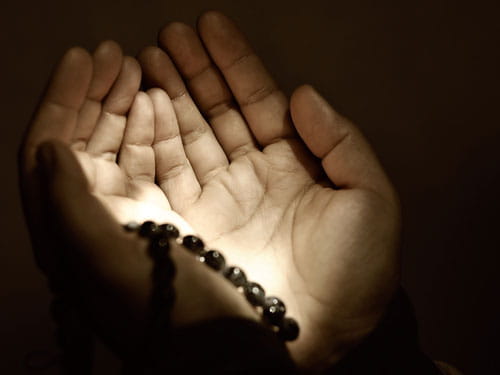
Once the holy month of Ramadan comes to a close, Muslims all over the world will begin celebrating Eid Al-Fitr. During Ramadan, Muslims took part in periods of fasting, devotion to prayer, purification and charitable acts. In order to understand the significance of Eid ul-Fitr, you need to know what and why Ramadan is celebrated.
In case you didn’t know, Ramadan falls during the ninth month of the Islamic calendar. It’s an important time for Muslims because they believe that during Ramadan the Qu’ran was revealed to mankind through the Prophet Muhammad. Typically, Ramadan starts in May and continues until the end of June.
Eid ul-Fitr begins the weekend following Ramadan. The exact date Eid is dependent on a combination of the sighting of the new moon and astronomical calculations. Furthermore, the time when Eid starts also depends on where you are in the world, and when the new moon is visible.
When translated, Eid al-Fitr means “festival of breaking the fast” and marks the end of the fasting month of Ramadan. English alternative terms and references for Eid are: fast-breaking Eid, sweet festival, Feast of Fasting, Small Eid, Eid feast, Sugar Feast, and Eid of happiness.
Traditionally Eid is celebrated for three days and is an official holiday in Muslim-majority countries. While the United States doesn’t observe Edi with any closures or shutdowns, many employers and schools allow time off for Muslim workers and children.
Muslims will gather together at the mosque for a prayer, prior to spending the day with friends and family – and wishing one another ‘Eid Mubarak’ or ‘Blessed Eid’. In fact, the standard greeting on this occasion is ‘Eid Mubarak’ which means “have a blessed Eid.” The celebration is the perfect opportunity for the Muslims to thank Allah for helping them get through the month-long fasting during the Ramadan holiday.
The Eid prayer is performed in congregation in open areas like fields, community centers or at mosques. There is no direct call to prayer given for Eid prayer, but it consists of only two units of prayer with an additional six incantations. The Eid prayer is generally followed by the sermon and the attendees ask Allah for forgiveness, mercy, peace and blessings for everyone in the world.
Eid is a time when Muslims pledge their gratitude to Allah by donating money to various charities and philanthropic efforts. Moreover, the celebration is also considered to be the ideal time for Muslims to forgive those who have wronged them. The idea of spiritual fasting is embraced and correlates with the new leaf the individual is essentially turning over. While the idea of helping those less fortunate is a common thread, it’s also a goal that Muslims aim to keep in check throughout the upcoming season of life.
More than one billion Muslims around the world gather to celebrate Eid. The worship process may seem daunting; however, reviewing it on a step by step process can remove some of the stereotypical connotations and provide a more meaningful explanation on the functionalities of ‘rakat’ (worship).
The First Raka
Action 1: Perform two Rakats behind the Imam for Eid prayer along with six additional Takbirs.
Action 2: After the Imam has said "Allahu Akbar" the first time, you should raise your hands and follow. This is the first Takbir of the prayer.
Action 3: There will be three Takbirs before the Imam begins reciting from the Quran. Each time the Imam says "Allahu Akbar", you should raise your hands, then place them on your sides. After the third Takbir, the Imam will begin reciting from the Quran. At that point, you should put your hands on your chest, with your right hand on top of the left.
Action 4: Listen to the recitation of the Holy Quran. The Imam will recite Surah Al Fatiha (the first Surah of the Quran) and then another Surah.
Action 5: When the Imam says "Allahu Akbar" go into Ruku – which is the bowing position.
Action 6: Stand up straight when he says Sami Allahu liman Hamidah (translation: Allah hears those who praise Him), and say "Rabbana lakal Hamd" (translation: our Lord praise be to You) in a low voice.
Action 7: When the Imam says "Allahu Akbar" go into Sujud – which is prostration. You will do two prostrations just like a normal prayer.
The Second Raka
Action 8: The Imam will first recite from the Holy Quran.
Action 9: Afterwards, before going into Ruku, there will be three Takbirs. Follow the Imam. Raise your hands after each "Allahu Akbar." After the third Takbir, go into Ruku – remember, this is the bowing position.
Action 10: Stand up straight when the Imam says, “Sami Allah huliman Hamidah”, and say "Rabbana lakal Hamd" in a low voice.
Action 11: When the Imam says, "Allahu Akbar" go into Sujud. - you will do two prostrations.
Action 12: After this, you sit for the duration of Tashshahud.
Action 13: After the Imam ends the prayer by turning to his face to the right first and saying, "Assalamu alaikum wa Rahmatullah" and then to his left. You should follow suite and repeat.
Action 14: Do not immediately get up. The Imam will provide a short speech. It’s disrespectful not to stay still and listen. Use this time to catch your breath and relax.
In addition, to the charitable donations and mosque gatherings, Muslims rejoice by visiting friends and relatives, hosting food parties and sharing delicious deserts. Usually, children receive new clothes and shoes – some families also gift cash gifts, called eidi, to their elders and relatives. It is forbidden to fast on the Day of Eid.
Eid al Fitr is a rejoiceful day for Muslims. The day is truly a celebration because it signifies the fruits of their labor and sacrifice that took place during the Ramadan observance. What’s wonderful is the sense of community and unity that Eid brings forth.

